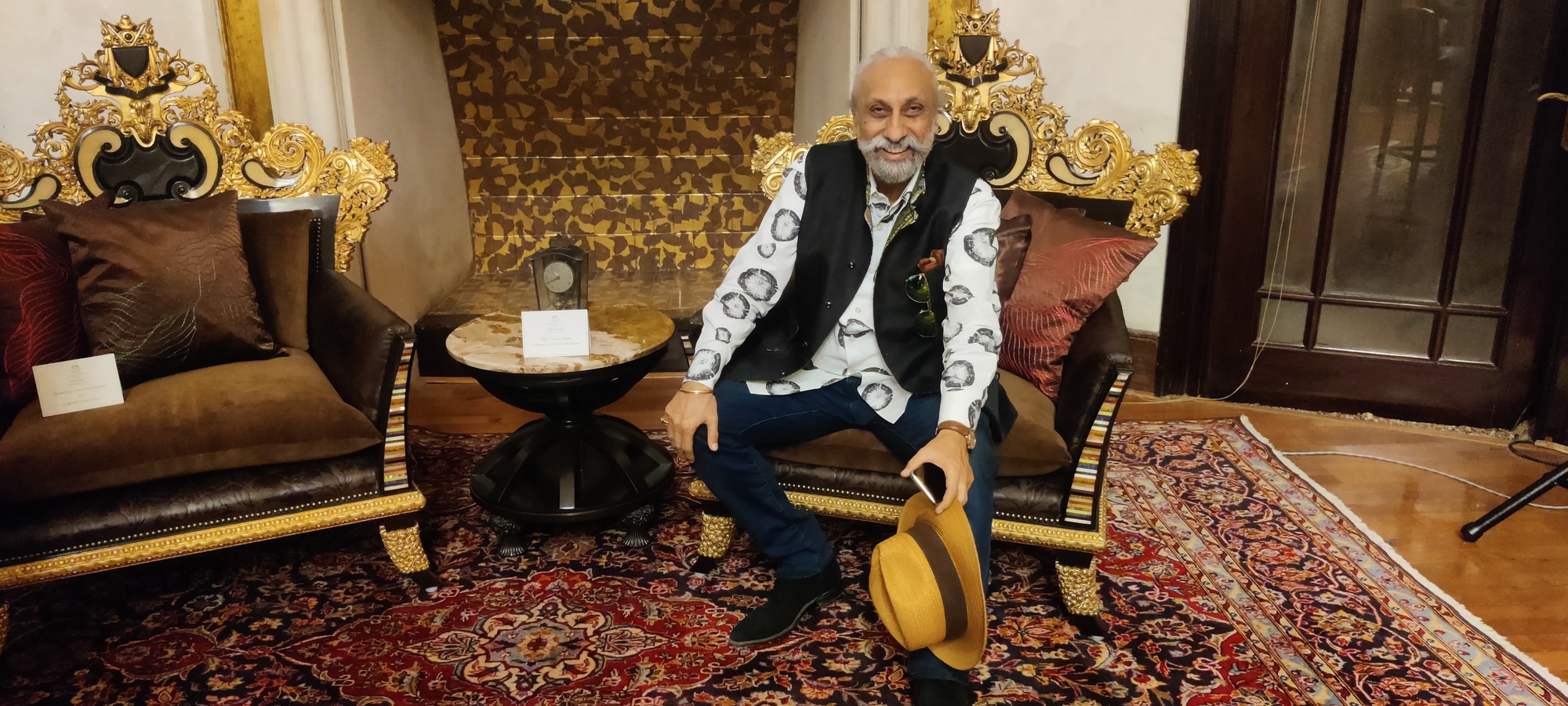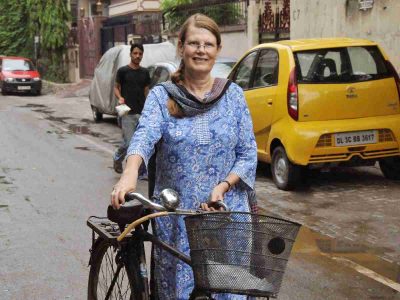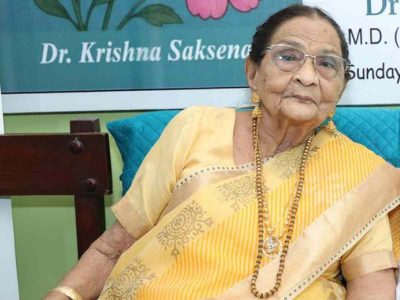Born into an army officer’s family in Mumbai in 1958, Captain Manjit Singh Bullar is a distinguished sculptor whose art reflects a unique blend of Indian symbolism and global influence.
Bullar’s childhood in various army cantonment areas across the country became the crucible for his artistic sensibilities, infusing his work with a rich tapestry of Indian symbolism. His design vocabulary evolved significantly, influenced by the historical context surrounding him.
Armed with a degree in Anthropology, with a specialisation in Architecture and Anthropometry, Bullar delved into the intricate relationship between form and function. His early shows, featuring cutting-edge sculptural renderings in welded steel, garnered accolades, with ‘Static Time’ earning him the Lalit Kala Akademi award.
Bullar’s military career exposed him to the vibrant colours, textures, and embroidery traditions of Punjab. Serving in Assam and Arunachal Pradesh expanded his artistic horizons — he drew inspiration from Buddhist monasteries and the dwellings of people living in the hills. In Chandigarh, he discovered new techniques inspired by the Sikhligar and Gadia Lohar community — adopting hot forged iron for contemporary use. His breakthrough led to collaborations with renowned designer Tom Dixon, and the establishment of ‘Life’ — the first standalone lifestyle store in the national capital’s Chhatarpur area.
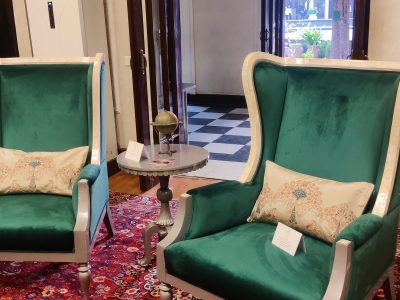
With modern and scientific design interventions, Bullar aims to preserve the legacy of art. Over the past four decades, he has consistently extended this approach to other Indian craft skills and knowledge, ensuring their relevance and continuity.
Khatamband: Geometric Algorithm by Manjeet Bullar Design
Bullar envisioned developing an entire collection of bespoke designer furniture and accessories. He drew inspiration from Khatamband, an art of woodwork using a range of noble wood types to create patterned wood panels. These were used for decorating ceilings, doors, wooden wall panels, and furniture. It is a popular woodwork technique that flourished in the Kashmir Valley. It was originally introduced in Persia, modern-day Iran, in the fourteenth century.
This traditional art form provides ample creative freedom, allowing for the incorporation of diverse definitive or abstract geometrical patterns in the woodwork, enhancing the surface ornamentation of the pieces.
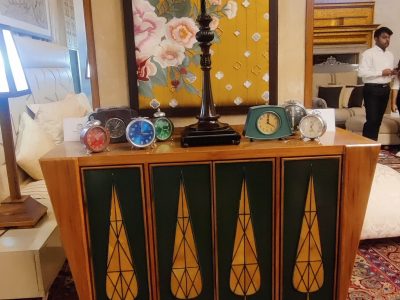
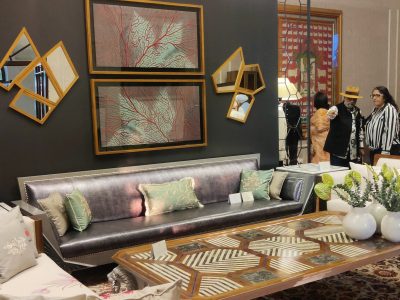
“Khatamband is a mathematical concept emerging from the principles of Algebra, from which the word ‘Al’ forms the start of the algorithm, hereby unifying the concept of Al- Gebra and Al-Gorithm. The basic concepts of modular measurements, sequential learning, and artificial intelligence are embedded in Khatamband,” Bullar told Patriot.
“It is the modularity of the enclosed polygon, which is reflected in architecture as well as in nature through the Fibonacci principles. This mathematical enigma has been dedicated to the artistic works of my beloved late brother, Brij Pawan Singh Bhullar, through his exhibits ‘Logarithms’, where coloured materials and white papers have been effectively used to convey the power of ‘n’, the key to that principle,” he added.
Manjeet Bullar Design presented “Geometric Algorithms“, a bespoke furniture and accessories collection, during a three-day exhibition alongwith Cavallo India, House of Hindee and Arteform at Bikaner House, New Delhi, earlier this week.
The exhibit displayed a fusion of rich heritage and contemporary innovation through its diverse designs, materials, and craftsmanship. From lavish wooden carvings to sophisticated modern designs — the range catered to a wide array of tastes and preferences.
Among the notable attractions were several firsts that captured the audience’s attention, including India’s longest shawl of 60 meters skillfully woven in Gaddi in the state of Himachal Pradesh.

House of Hindee is a sustainable fashion and lifestyle brand. His daughter Anhad Bhullah helped source the fabrics for the Khatamband event. The brand promotes unique weaving techniques and supports local women in doing so.
Anhad emphasises creating clothing, accessories, and home furnishings with all handmade elements. The entire process of sorting, spinning, weaving, and washing the tweed is done by hand by the Gaddi women of Himachal Pradesh.
Recently, Anhad organised a ramp show featuring students from Asian Academy of Film and Television(AAFT), Noida, to highlight the versatility of the collection.
Cavallo India’s involvement contributed to the soft art and interior aesthetics of the recent Khatamband furniture exhibit.

“Cavallo India is a part of our larger brand umbrella that follows the same brand DNA and ethics to create art and furnishings to enrich the aesthetics of our products and projects. Their work on the exhibited products is a testimony to this. Cavallo specialises in creating intricate surface ornamentation, embroideries, tapestries, artworks to enrich our brand offerings,” said (Manjit) Bullar.
Manjeet Bullar Design stands out as possibly the sole Indian brand that crafts its own design library and conceives methodologies for producing a comprehensive range of interior elements, including furniture, interior accessories, textiles, embroidered leather, and lighting.
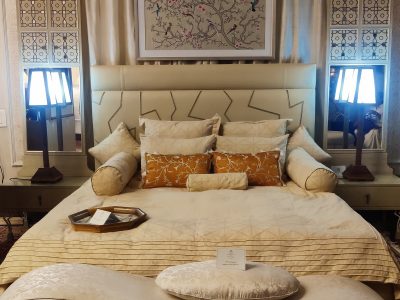
Actively involved in identifying and revitalising craft skills, Bullar focuses on various disciplines such as metal smithy, embroidery, stone carving, pietra-dura (stone inlay), woodwork, and introduces a unique concept of wall finishing. This involves utilising the ancient technique of aarash, employing lime and stone pigments to create a rich assortment of Indian colours and sensibilities.
“Understanding relevant fashion and the use of appropriate, ethical, and natural fabrics are the core of our design offerings. We work not only to create beautiful products but also to make them as ethical and environmentally friendly as possible. Natural materials and fabrics are very important to us when we design any product,” Bullar said.

